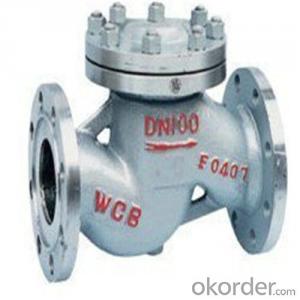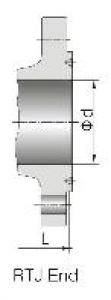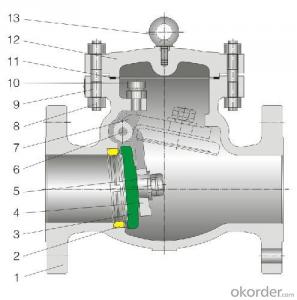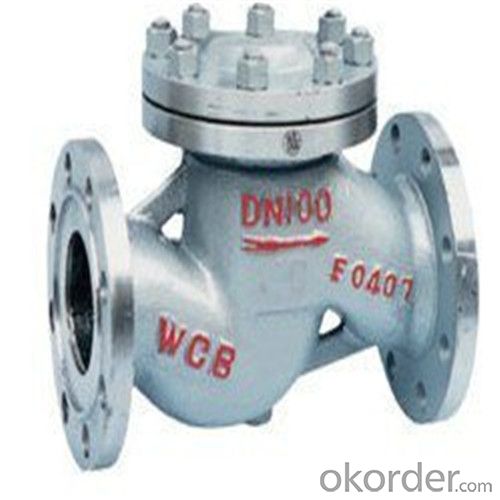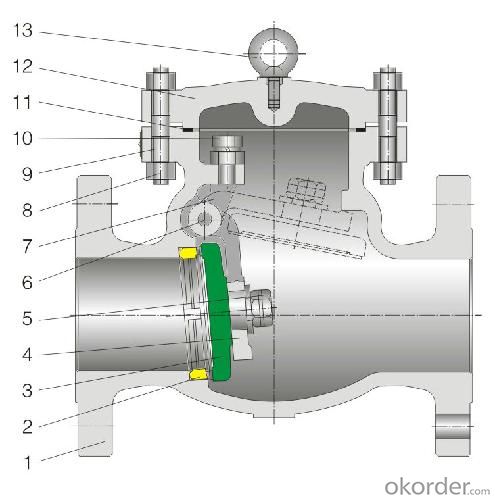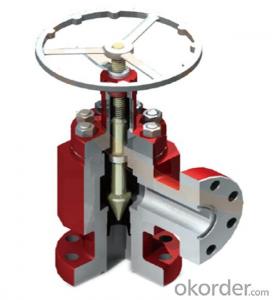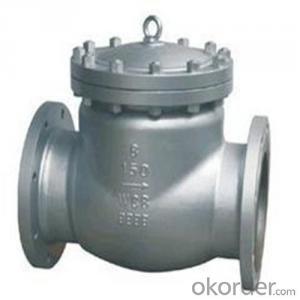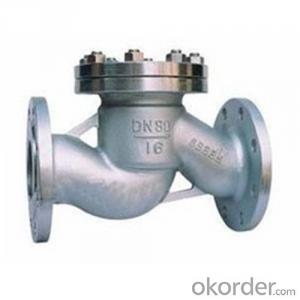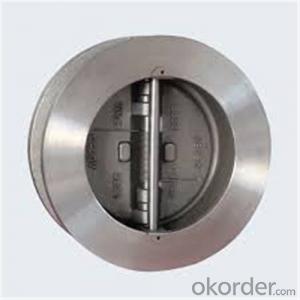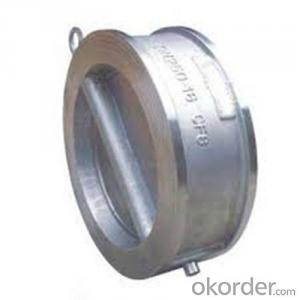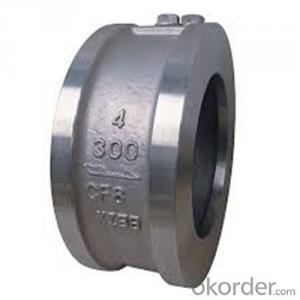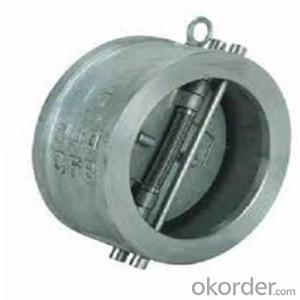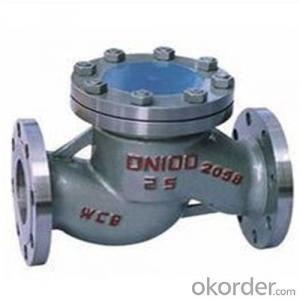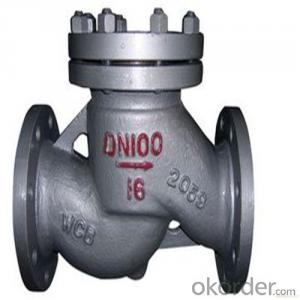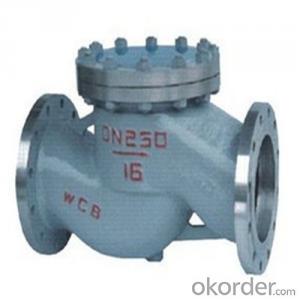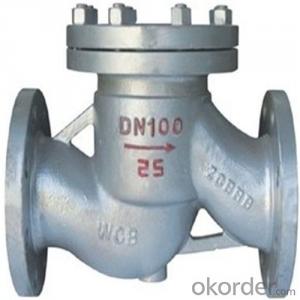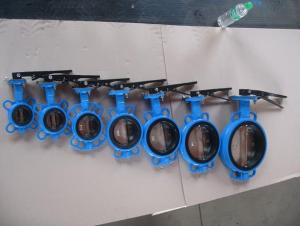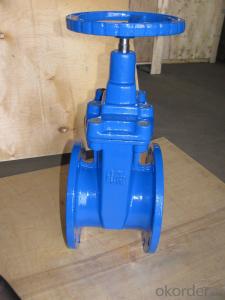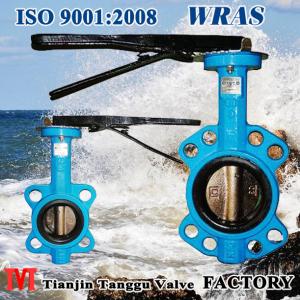API Cast Steel Lift Check Valve Size 250 mm
- Loading Port:
- Shanghai
- Payment Terms:
- TT OR LC
- Min Order Qty:
- 10 pc
- Supply Capability:
- 100 pc/month
OKorder Service Pledge
OKorder Financial Service
You Might Also Like
API Cast Steel Lift Check Valve 150 Class
The features of Cast Steel Lift Check Valve
Bolted Bonnet;Swing and lift disc;Metallic seating surfaces.
Body and Bonnet Connection of Cast Steel Lift Check Valve:
The body and bonnet of Class150~Class900 check valves are usually with studs and nuts.And the body and bonnet of Class1500~Class2500 check valves are usually of pressurized seal design.
Body-To-Bonnet Joint of Cast Steel Lift Check Valve:
Stainless steel + flesible graphite wounded gasket is used for Class 150 and Class 300 check valve;Stainless steel + flexible graphite wounded gasket is used for Class 600 check valve,and joint gasket is also optional for Class 600 check valve;Ring joint gasket is used for Class900 check valve;Pressurized seal design is used for Class 1500~Class 2500 check valves.
Seat of Cast Steel Lift Check Valve:
For carbon steel check valve,the seat is usually forged steel.The sealing surface of the seat is spray welded with hard alloy specified by the customer.Renewable threaded seat is used for NPS<10 check="" valves="" and="" welded="" on="" seat="" can="" be="" also="" optional="" if="" being="" requested="" by="" the="" customer.welded="" is="" used="" for="" nps="">12 crbon steel gate valves .Forstainless steel check valve,integral seat is usually adopted ,or to weld hard alloy directly integrally.Threaded or welded on seat is also optional for stainless steel check valve if being requested by the customer.
Parameter of Cast Steel Check Valve:
Standard Criteria | ASME/ANSI/API customize |
Pressure Rating | 150 Class 300 Class 600 Class 900 Class 1500 Class 2500 Class customize |
Valve Size | 50 mm 65 mm 80 mm 100 mm 125 mm 150 mm 200 mm 250 mm 300 mm 350 mm 400 mm 450 mm 500 mm 600 mm 650 mm 700 mm 750 mm |
2 inch 2.5 inch 3 inch 4 inch 5 inch 6 inch 8 inch 10 inch 12 inch 14 inch 16 inch 18 inch 20 inch 24 inch 26 inch 28 inch 30 inch customize | |
Actuator | Automatic customize |
Connection | Butt Welding Flange RF Flange RTJ customize |
1-Body Material | A216 WCB A351-CF8 A351-CF8M customize |
2-Seat ring | A351-CF8 A351-CF8M A105+13Cr Tool Steel+A105 customize |
3-Disc | Tool Steel+A216 WCB A351-CF8M A351-CF8 A216 WCB+13Cr customize |
4-Arm | A351-CF8 A216 WCB A351-CF8M customize |
5-Nut | A194 8M A194-8 A194 2H customize |
6-Arm pin | A182-F6a A182-F316 A182-F304 customize |
7-Yoke | A351-CF8 A351-CF8M A216 WCB customize |
8-Bonnet nut | A194 8M A194-8 A194 2H customize |
9-Bonnet bolt | A193-B8 A193-B8M A193-B7 customize |
10-Bolt | A193-B7 A193-B8 A193-B8M customize |
11-Gasket | graphite+304 graphite+316 customize |
12-Bonnet | A216 WCB A351-CF8M A351-CF8 customize |
13-Eye bolt | A181 customize |
Design Standard | API 6D BS 1868 customize |
Connection Standard | API 605 ASME B 16.25-2007 ASME B 16.47A ASME B 16.47B ASME B 16.5 MSS SP-44 customize |
Test Standard | API 598 API 6D customize |
Face to Face | ASME B 16.10 customize |
Pressure-temperature ratings | ASME B 16.34-2004 customize |
Wall thickness dimension | API 600 BS 1868 |
FAQ of Cast Steel Check Valve:
Q1:I can’t find the type of steel check valve which I need. what can I do?
The chart above only lists out some common composition of steel check valve parts.We may provide other different parts material composition according to the customer's request or the actual valve working condition.
Q2:Which certification do your products pass?
Our products are in accordance with ISO 9001、ISO 14001、API 6A、API 6D、TS CE、API607/6FA/BS6755.
- Q: I got an engine knock and backifiring and no power not even to move the car just a few feet. I figured its the vales that are eather broken or burned out. I just started to take my top end apart to check and change borken or damaged valves so i can drive the car once again. My question is, when i take the valve cover off i can see what looks like the valves and the springs and something in the middle of the springs, now what iam i gona be looking at for a broken/damaged valve since i dont see any obvious damages but i could be wrong.
- you need to pull the head(s) off to see the valve. all you are seeing is the valve stem wich is not going to help you determine much. remove the intake manifold and then the head(s) the underside of the head (combustion chamber) is where you will be able to visualy inspect the valves. more likely you have weak or broken springs, lifters arent pumping up or your cam is going flat. as for the knock sound, that is a whole other thing to diagnose.
- Q: The water won't drain around my outside shutoff valve. The faucet at the valve is not dripping any water. Could it be underground problem?
- i don,t understand your Question.
- Q: Okay so my boyfriend's father is getting a heart valve replacement....he's so nervous he cried last night when he heard it will be in 2 weeks....and he's usually one of those tough guys has anyone or know anyone who has had this type of surgery. They are leaning towards a animal (cow or pig) valve...because with mechanical you have to take blood thinners for the rest of your life...anyways if anyone knows information on this or knows the pro's and cons of the two diff. types of valves please give me info. Thanks
- Hey, Firstly, to answer your question, I quote from the Society of Thoracic Surgeons: ...there is little if any difference between valves. The principle advantage of mechanical valves is their excellent durability. From a practical standpoint, they do not wear out. The principle disadvantage is that there is a tendency for blood to clot on all mechanical valves. Therefore patients with artificial valves must take anticoagulants or blood thinners for the rest of their life. bovine or porcine valves have ...a reduced risk of blood clots forming but all are less durable than mechanical valves. Given enough time, they will probably all wear out. The options in this category include xenograft valves made from animal tissues (most often pig aortic valves), homograft or allograft valves retrieved from human cadavers, and pulmonary autograft valves moved from the patient's pulmonary artery on the right side of the heart to the aortic position on the left. The decision on the type of valve used should be made in conjunction with your cardiothoracic surgeon and your cardiologist. Ultimately the choice will depend on a patient's preferences, lifestyle, and individual risks as determined by age and other medical conditions. The risk for this kind of surgery is really high and depending on the individual the outcomes may vary. What I think your boyfriend's father needs now is reassurance from you guys, it must be really hard for him to have to expose his vurnerable side since he's always been the tough guy around. And look online for informations: www.nlm.nih /medlineplus/tutorials/heartvalvereplacement/htm/index.htm Medline is one of the most reliable database, I'd say you can read up the surgery there.
- Q: I have a 1989 Jeep Cherokee with 218,700 miles on it and my engine has thick oily gunk on it, possibly from a leaky valve cover gasket, should I change the gasket? I have been told that this is normal and not to worry about, but from the amount of this gunk, I find it hard to believe this is normal. The top of the valve cover has a light covering of gunk, but on the sides and towards the bottom of the engine. it gets very thick and at some places you can't even make out whats suppose there. Does a leaky valve cover gasket mean that there is another problem going on?Can leaving the oily gunk on the engine cause any problems?Any info would be greatly appreciated.
- Usually, a leaky valve cover gasket is just that. A leaky valve cover gasket. Unless you are building up high internal pressure from a clogged PCV for example and literally forcing the oil out the weakest point, there usually is no underlying issue. Leaving the oily gunk does a couple things. If its on rubber such as any hoses that aren't oil resistant, they will degrade quickly. The same can goes for wiring insulation, motor mounts, or even the rubber seals on some of your front end pieces. Also, wrapping an engine in a thick layer of goo doesn't let it cool as it should and puts more thermal burden on it. What you do at this point is a question of how much longer a 1989 Jeep with 218,700 miles will go or how much longer you want to keep it.
- Q: does anyone know how much work it would take for a 1998 Mazda 626 (2.0L MFI DOHC) to change a bad intake valve?what work would be necessary and what kind of price are we talkin?
- What diagnosis gave you the fact that you need a cvalve changed...dis you not replace the timing belt and it bent the valves(major head repair) or did you do a compression check to determine you have bent valve (intake valves don't burn) (lesser repair)
- Q: in engines otto cycle
- Larger valves allow for more volume of fuel/air mixture to be introduced into the combustion chamber. They give an engine more horsepower but can compromise efficiency in the long run. I would rather have smaller intake valves and larger exhaust valves. The advantage to that is better flow of the exhaust. 40 percent of an engines total horsepower and torque comes from exhaust flow. If a person wants more fuel in the chamber all they have to do is change the camshaft to one that has a longer open duration. This will let the desired amount of fuel/air in where you need it.
- Q: So i was looking for car parts and i was using my favorite website, and i was looking at turbos which are wicked costly. But i saw some blow off valves which i have heard about before. But i was wondering if you need a turbo in order to have a blow off valve installed into your car. And if you don't my next question would be is it hard to put one in and how?? Thank you for your time..
- A blowoff valve goes onto your intake or the piping from your turbocharger to make sure that you dont run to much pressure they are adjustable to whatever pressure you desire. Usually people running a positive displacement blower or a turbochargers run them. That being said I'm sure that you could put one on your car but without a power adder it would never blow off. Except in the case of a intake manifold overpressure such as a backfire.
- Q: In December I got a new John Packers Bb Cornet and it was fine to start with. But recently the valves have been sticking, especially the 1st and 2nd ones. Even when I put valve oil on them they stick. It's really starting to annoy me, is there any else I can do to prevent this?
- If the valves continue to stick after being oiled, then it's time to clean your horn. Remove all the valves (making sure to keep them in order so you don't put them back in the wrong casings) as well as the slides. Fill a sink with warm (not hot) water with liquid dish soap. Wash all the parts gently with a soft clean cloth. There are special brushes available at music stores for cleaning the insides of slides. After cleaning, pat everything dry, apply fresh grease and oil, and reassemble.
- Q: I need an angle valve for my sink buts its a bit of an odd size. I have copper tubing at 1/2 i need a valve preferably compression that can feed to a water supply that is 1/2 Pipe thread.Included images of the supply hose valve to sink. To help show what i'm looking for.
- If you're looking for a valve that attaches to a 1/2 iron pipe coming out of the wall, and then will feed to 1/2 copper tubing, then you're looking for- an angle stop, 1/2 female iron pipe to 1/2 compression. Just about any good hardware store will have it in stock or be able to order it, just be sure that they know what you need. I've often found that using visual aids,like a piece of pipe in one hand, and a piece of tubing in the other, with an empty space, waiting for a valve, between them, can be an invaluable aid to communication. Don't even try to cut and adapt a braided hose. The stainless braid contains a (relatively thin) rubber hose. Without the braid to reinforce it, it will burst. If you need to adapt plumbing, there is always a way to get water from point A to point B. The challenge is finding the most elegant route.
- Q: i am hearing tapping on top under of vale cover sound like valve need adjusting
- time to change oil, use thicker oil or yep, adjust valves. not a monstrous project but time consuming. Need torque wrench, valve cover gasket and shim kit to adjust. It's a pain as u have two nuts on each valve adjustment rocker bolt. tightening causes the lower one to drop sometimes so u may find yourself adjusting the valves 2-3 times each. I did it on my old Acura with 78K miles. ran smoother. i dropped in a pulley kit and cold intake as well but afterwards. the head was real clean as I change oil regularly. I had tapping even after changing the knock valve so I knew the valve job was needed.
Send your message to us
API Cast Steel Lift Check Valve Size 250 mm
- Loading Port:
- Shanghai
- Payment Terms:
- TT OR LC
- Min Order Qty:
- 10 pc
- Supply Capability:
- 100 pc/month
OKorder Service Pledge
OKorder Financial Service
Similar products
Hot products
Hot Searches
Related keywords
